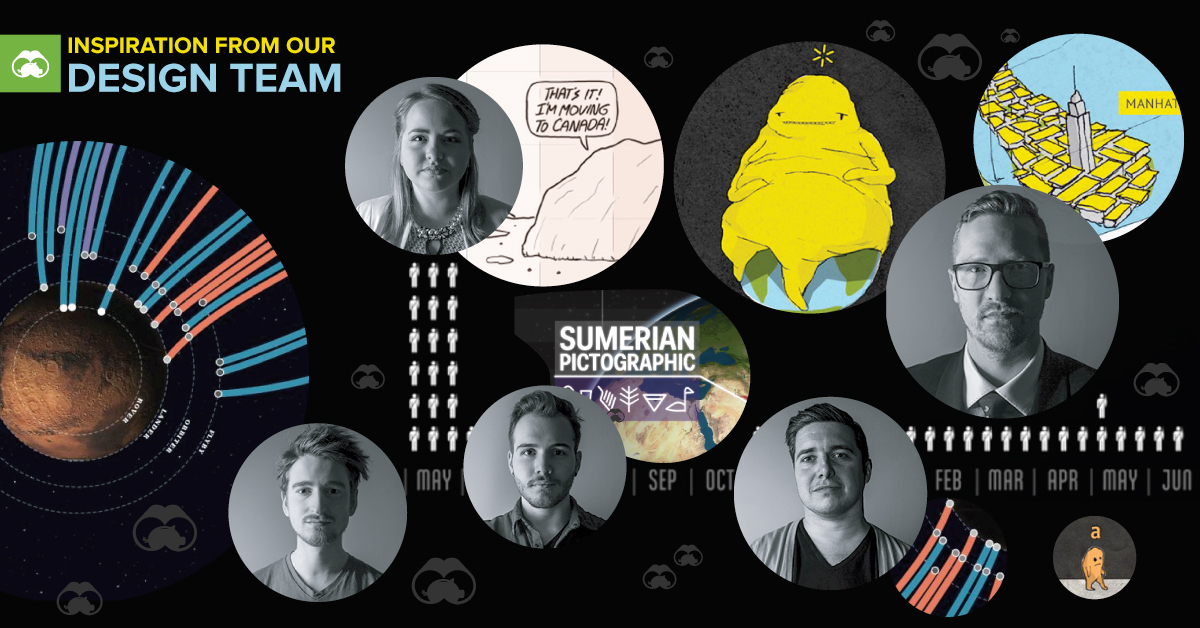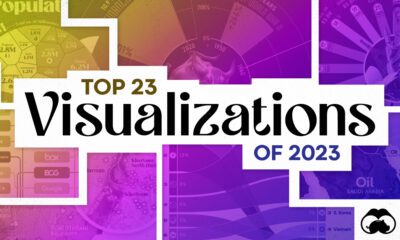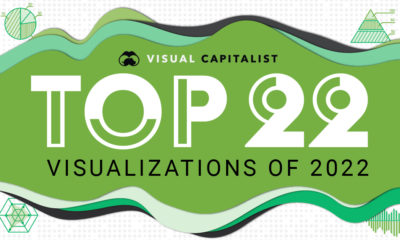Misc
Here’s 5 Infographics That Inspire Our Creative Team

Over the years, the Visual Capitalist creative team has created thousands of maps, charts, infographics, videos, data visualizations, and everything in between.
Through our online travels, we’ve encountered countless data-infused pieces – but only a select few stand out above the noise and filler. Below, five members of our creative team have each selected a piece that has inspired them in some way.
Let’s dive in!
— VC Creative Team

1. “The Weight of Walmart” by Nick Routley
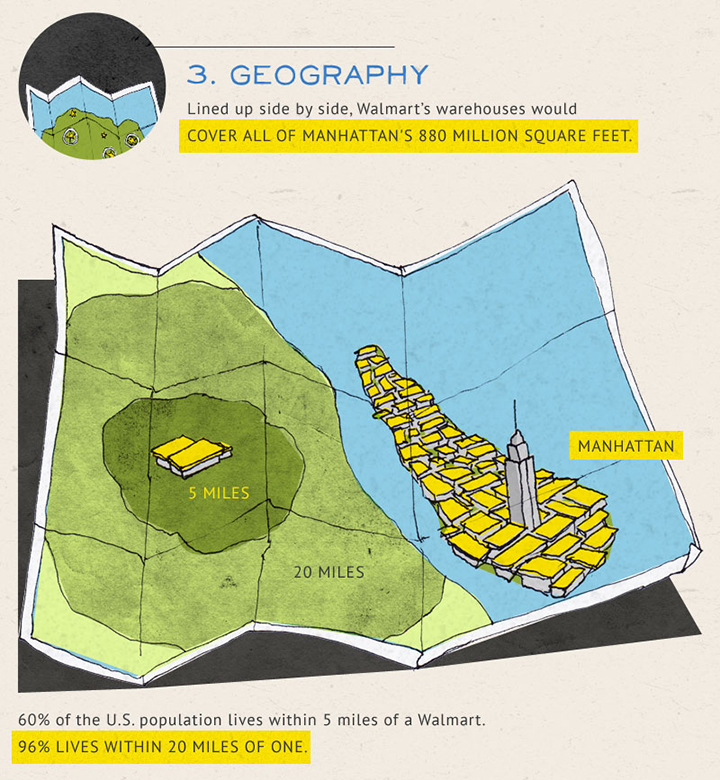
See the full piece here.
There was an explosion in the number of infographics being produced around 2010-2011, and in many ways, that wave of popularity is what got me interested in fusing data with storytelling and design.
I can’t look back at that era with rose coloured glasses though; most of the pieces I encountered were dysfunctional and ugly. There was, however, a batch of really amazing infographics that tapped into clever illustrations and concepts to get their point across.
In my opinion, the piece that sums up that style best is “The Weight of Walmart”.
I love “The Weight of Walmart” for a number of reasons, but foremost, the content is genuinely interesting. In 2011, when the piece was released, Walmart was a retail juggernaut. As a result, some of the stats in this infographic are pretty remarkable.
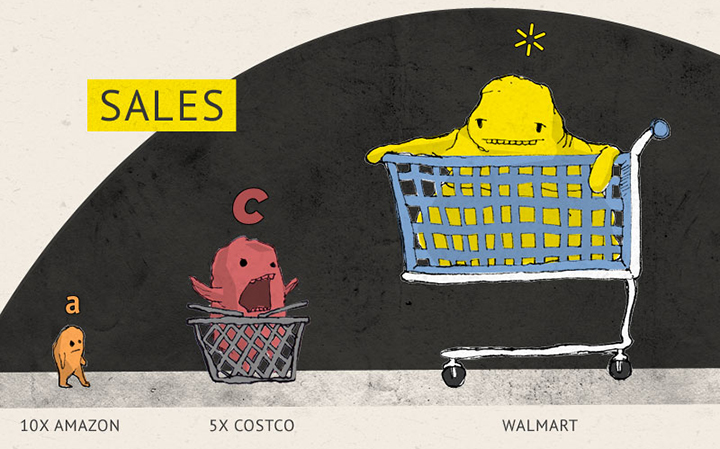
Next, the idea of the obese anthropomorphic monster is weird and amazing, yet doesn’t detract from the subject matter at all. It also sets a very interesting aesthetic tone in the piece that is a big contrast from the staid, icon-filled infographics many people are used to.
As well, the infographic uses colour in an extremely effective, strategic way. Note the colour yellow as you scroll. Aside from being an overt hat tip to Walmart’s branding, that pop colour leads you through the content so you’re never stuck wondering where you should be looking next.
“The Weight of Walmart” made a big impact on me as a budding designer and even today – when we have more creative leeway on a piece – I look to that weird, wonderful example as one to emulate.

2. “The World’s First Writing Systems” by Melissa Haavisto
Watch the video embedded above
I’ve heard it said that while language could exist without writing, history books depend on the written word.
From our earliest days, humanity has shared information in an ever-evolving sequence of symbols, crude cave paintings, and timeworn inscriptions etched into stone. Fast-forward to 2017, and this habit of sharing knowledge has only continued to grow at breakneck speeds, with an explosion of data and information being created every second.
As a designer, I’ve always loved three things beyond the pure aesthetics: maps, history, and storytelling. Released in 2016 by Business Insider, “The Spread of the World’s First Writing Systems” concisely uses the first two points – maps and history — to paint the complexity of the third point (storytelling) in stunning detail.
In the span of two and a half minutes, the map follows a surge of evolving literacy systems across the world. Red is used to highlight six geographic regions, and colored timelines mark the birth (or death) of each script.
If you pause the video around the two-minute mark and look at the timelines, you can clearly see how complicated the evolution of language is. Winding new branches and dialects move across geographic borders, while some ancient scripts defy the odds and remain intact for millennia. Among the excerpts of each script, you may even notice some symbols that seem vaguely familiar to the modern eye.
Beyond its data functionality, the map pairs realistic beauty with a clean aesthetic and groups each family of written languages well.
As part of a series of concise, animated maps, “The Spread of the World’s First Writing Systems” remains one example among many that inspired my fascination with time, geographic space, and information.

3. “Earth Temperature Timeline” by Harrison Schell
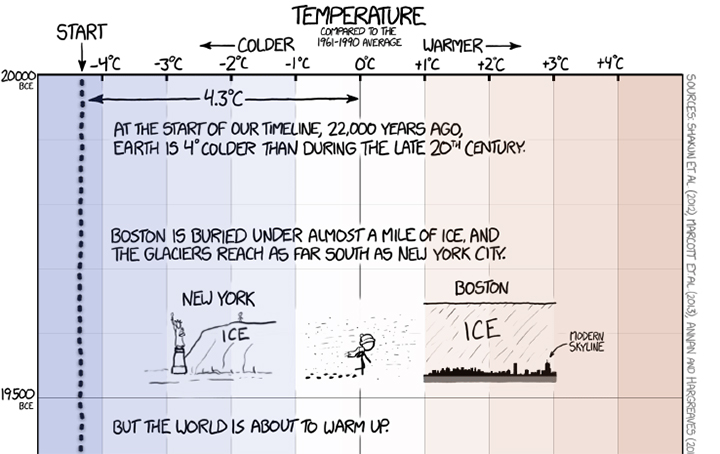
See the full piece here.
Where a graphic really sets itself apart is how effectively it can communicate its intended message. The “Earth Temperature Timeline” by xkcd takes a huge amount of data, quite literally all of human history in the past 22,000 years, and makes it easy, fun, and informative to follow.
The strong points of this graphic cannot be overstated. The storytelling, with added jokes, keeps the reader engaged and interested, even if there is no flashy graphics or icons to accompany every slab of text. This is a great example of how writing and concept can carry the reader with sparse graphics, acting only as simple nudges to deliver the concept.
And finally, when you are happily comparing historic events and their relation to one another, the reality sets in. The whole 15,000 pixels set us up for the last inch, a swift blow to the stomach — climate change is here, and we are responsible.
This graphic altered my perspective on climate change — it made it real, and it made it ridiculous to claim “the climate has changed before”. When it comes down to it, making infographics is about taking data and making it digestible, and xkcd did just that, even if it was hard to swallow.
(After setting your car on fire) Listen, your car’s temperature has changed before.
– Randall Munroe of xkcd
>> View the Earth Temperature Timeline

4. “The Fallen of World War II” by Clayton Wadsworth
Watch the video embedded above
When we hear about the great wars of human history, it’s difficult to picture the sheer scale of the devastation in our minds.
What does 100,000 people look like? That one is simple enough – I can mentally picture a large stadium filled with people. But, what about 70 million people? There you’ve lost me. That is such a large number that I can no longer accurately visualize what that looks like.
That is the wonder of “The Fallen of World War II” by Neil Halloran. It takes the colossal numbers of casualties of both soldiers and civilians in WWII, and visually compares them to many of the other conflicts through human history in one brilliant video.
This award-winning motion graphic has inspired my own work here at Visual Capitalist, and was one of my primary animation references for the initial draft for “How Much Money have Humans Created?”, which we released in 2016. The success of this piece for me is largely due to its ability to contextualize history, allowing us to visually see the drastic difference between modern day conflicts and those of the past by using numbers effectively.
While its subject matter and length might turn away some from watching it in full, I strongly encourage you do so, as it is wonderfully made and incredibly captivating.

5. “Mission(s) to Mars” by Bennett Slater
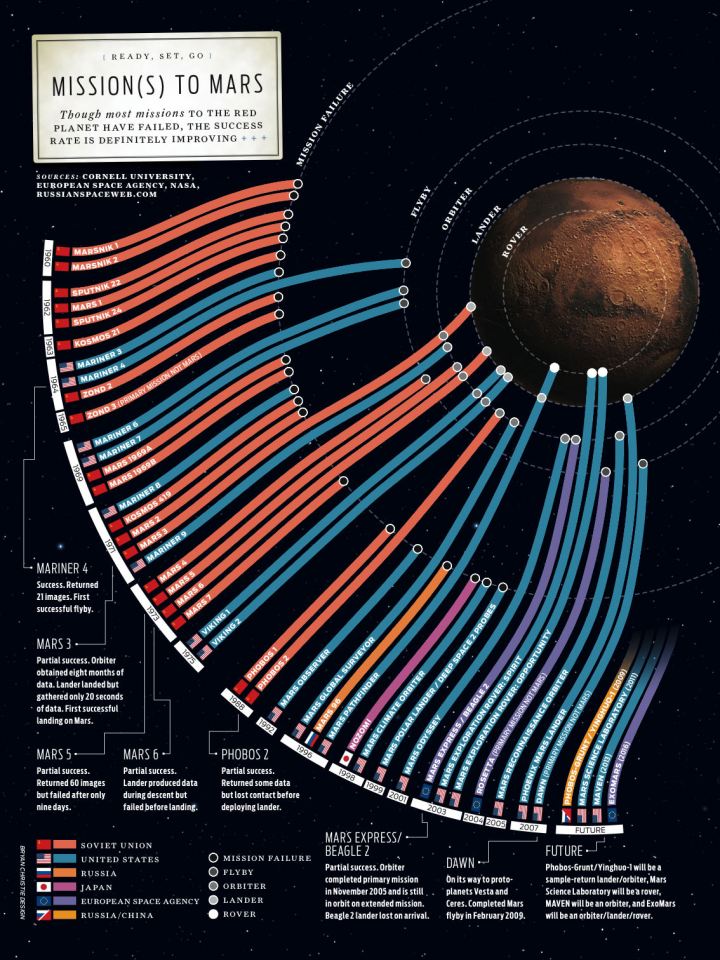
View a larger version of this graphic here
An infographic needs to be able to communicate complex or dull information quickly and efficiently. Extraneous fluff added to a visualization because it’s “cool” typically muddies the information and begins to chip away at our attention. A simple, streamlined, and focused approach can hit its mark beautifully if done well. This graphic, which visualizes the world’s missions to Mars, is the perfect example of how to turn a table of names and dates into a piece of information art.
Let’s start with the visual hierarchy. Your eye shoots directly to the large white box against a black background. In the fewest words necessary, we read what this is about and smooth as milk we flow into the timeline. This is the meat of the graphic, and what we came for. Without even needing to read the dates, you are compelled visually to begin from the top and move down.
Now comes the genius bit. The timeline works both as a measure of time, but also a measure of distance. We move down the timeline and closer to Mars as we go. The viewer is able to gloss over this and still completely grasp where the Mars missions began and how far we’ve come in a matter of seconds. Once we’ve gotten what we need to from the timeline, we are invited to catch a few neat facts before heading down to the business of the color-coded legend. This design satisfies my itch every time I look at it.
It’s interesting to see styled trends come and go in the infographic world, but the one thing that will always rise to the surface is simple, effective information design. If you can hang a piece of art on your wall and learn some facts at the same time, then that’s the real mission.
>> View larger version of Mission(s) to Mars
Subscribe to Visual Capitalist
Our creative team uses the above infographics as inspiration for their own work.
If you want to see their creations, we publish new visuals every day that help to explain the complex world of business and investing.
Join over 40,000 people that get our free daily email blast, or join thousands of others on Facebook, Twitter, LinkedIn, or YouTube who get fresh daily visuals from us.
Misc
How Hard Is It to Get Into an Ivy League School?
We detail the admission rates and average annual cost for Ivy League schools, as well as the median SAT scores required to be accepted.

How Hard Is It to Get Into an Ivy League School?
This was originally posted on our Voronoi app. Download the app for free on iOS or Android and discover incredible data-driven charts from a variety of trusted sources.
Ivy League institutions are renowned worldwide for their academic excellence and long-standing traditions. But how hard is it to get into one of the top universities in the U.S.?
In this graphic, we detail the admission rates and average annual cost for Ivy League schools, as well as the median SAT scores required to be accepted. The data comes from the National Center for Education Statistics and was compiled by 24/7 Wall St.
Note that “average annual cost” represents the net price a student pays after subtracting the average value of grants and/or scholarships received.
Harvard is the Most Selective
The SAT is a standardized test commonly used for college admissions in the United States. It’s taken by high school juniors and seniors to assess their readiness for college-level academic work.
When comparing SAT scores, Harvard and Dartmouth are among the most challenging universities to gain admission to. The median SAT scores for their students are 760 for reading and writing and 790 for math. Still, Harvard has half the admission rate (3.2%) compared to Dartmouth (6.4%).
| School | Admission rate (%) | SAT Score: Reading & Writing | SAT Score: Math | Avg Annual Cost* |
|---|---|---|---|---|
| Harvard University | 3.2 | 760 | 790 | $13,259 |
| Columbia University | 3.9 | 750 | 780 | $12,836 |
| Yale University | 4.6 | 760 | 780 | $16,341 |
| Brown University | 5.1 | 760 | 780 | $26,308 |
| Princeton University | 5.7 | 760 | 780 | $11,080 |
| Dartmouth College | 6.4 | 760 | 790 | $33,023 |
| University of Pennsylvania | 6.5 | 750 | 790 | $14,851 |
| Cornell University | 7.5 | 750 | 780 | $29,011 |
*Costs after receiving federal financial aid.
Additionally, Dartmouth has the highest average annual cost at $33,000. Princeton has the lowest at $11,100.
While student debt has surged in the United States in recent years, hitting $1.73 trillion in 2023, the worth of obtaining a degree from any of the schools listed surpasses mere academics. This is evidenced by the substantial incomes earned by former students.
Harvard grads, for example, have the highest average starting salary in the country, at $91,700.
-

 Real Estate2 weeks ago
Real Estate2 weeks agoVisualizing America’s Shortage of Affordable Homes
-

 Technology1 week ago
Technology1 week agoRanked: Semiconductor Companies by Industry Revenue Share
-

 Money1 week ago
Money1 week agoWhich States Have the Highest Minimum Wage in America?
-

 Real Estate1 week ago
Real Estate1 week agoRanked: The Most Valuable Housing Markets in America
-

 Business2 weeks ago
Business2 weeks agoCharted: Big Four Market Share by S&P 500 Audits
-

 AI2 weeks ago
AI2 weeks agoThe Stock Performance of U.S. Chipmakers So Far in 2024
-

 Misc2 weeks ago
Misc2 weeks agoAlmost Every EV Stock is Down After Q1 2024
-

 Money2 weeks ago
Money2 weeks agoWhere Does One U.S. Tax Dollar Go?

